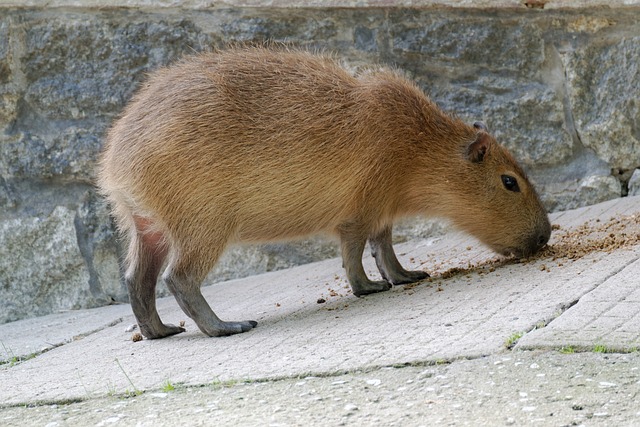One behavior that often intrigues observers is the capybara’s reaction to threats.
Despite some wild animals’ tendencies to play dead when faced with danger—an act known as thanatosis—capybaras typically employ different survival strategies.
Given their excellent swimming abilities, they are more inclined to use water as a refuge rather than feign death to escape predators.
The idea of capybaras playing dead may arise from misinterpretations of their behavior.
If a capybara lies very still, it could be resting or basking in the sun rather than displaying a deceptive survival tactic.
These creatures are social and tend to live in groups, which suggests that they would rather rely on the safety provided by their numbers and their aquatic skills to avert threats.
Observations and studies of capybara behavior help clarify the nuances of their interactions with the environment and the authenticity of the claim that they play dead when faced with danger.
Capybara Behavior
Capybaras exhibit a range of behaviors that are key survival strategies in their natural habitat. These behaviors include specific tactics for evading predators, such as playing dead or interacting with them in various ways.
Playing Dead as a Defense Mechanism
In some instances, capybaras may use thanatosis, a behavior where an animal mimics the appearance of being dead. This can be a last resort to avoid predation when escape seems impossible. They remain still for varying lengths of time to deceive the predator.
Interacting with Predators
Capybaras typically rely on their keen senses and group vigilance to detect predators early.
- Detection: They are alert to threats by visually scanning or smelling.
- Evasion: They often escape predators by swiftly running to water and swimming away.
- Group Tactics: If a predator is spotted, the alerted capybara will communicate danger to the group through vocalizations or body language, aiding in collective evasion.
Observing Capybara Play Behavior
Capybaras exhibit different play behaviors depending on their environment. These behaviors can be observed both in captivity and the wild, with variations influenced by their immediate surroundings and group dynamics.
In Captivity
Interaction with Objects: In captivity, capybaras often engage in play by interacting with various objects provided by their caretakers. This might include:
- Pushing balls with their noses
- Chewing on enrichment toys
Social Play: They may also show social play with other capybaras and even different species. This is characterized by:
- Gentle nudging
- Chasing one another
In The Wild
Environmental Exploration: Wild capybaras are more likely to utilize their natural surroundings for play. They may be observed:
- Digging or manipulating vegetation
- Swimming and splashing in water bodies
Group Dynamics: In their social groups, called “herds,” young capybaras learn through play which helps establish their place within the group. Social play in the wild includes:
- Mock fights
- Playing ‘follow the leader’
Comparisons to Other Animals
Capybaras do not typically play dead as a defense mechanism, unlike some other animals. However, they do exhibit certain behaviors and characteristics that are worth comparing.
Behavioral Similarities
Capybaras and several other species practice strategic behaviors to avoid predators. For instance:
- Opossums: Play dead when threatened – a behavior known as thanatosis.
- Feigning death is also seen in some birds, such as the Eurasian wryneck, to deter predators.
Behavioral similarities are occasionally found but are generally used by different species for varying purposes.
Distinct Traits
Capybaras possess a set of unique traits that distinguish them from animals that play dead:
- Social structure: Capybaras are highly social, often found in groups, which can act as a deterrence against predators.
- Swimming: They are excellent swimmers, using water as a primary escape mechanism.
Distinct traits among species are the result of adaptation to their environments and survival strategies.




